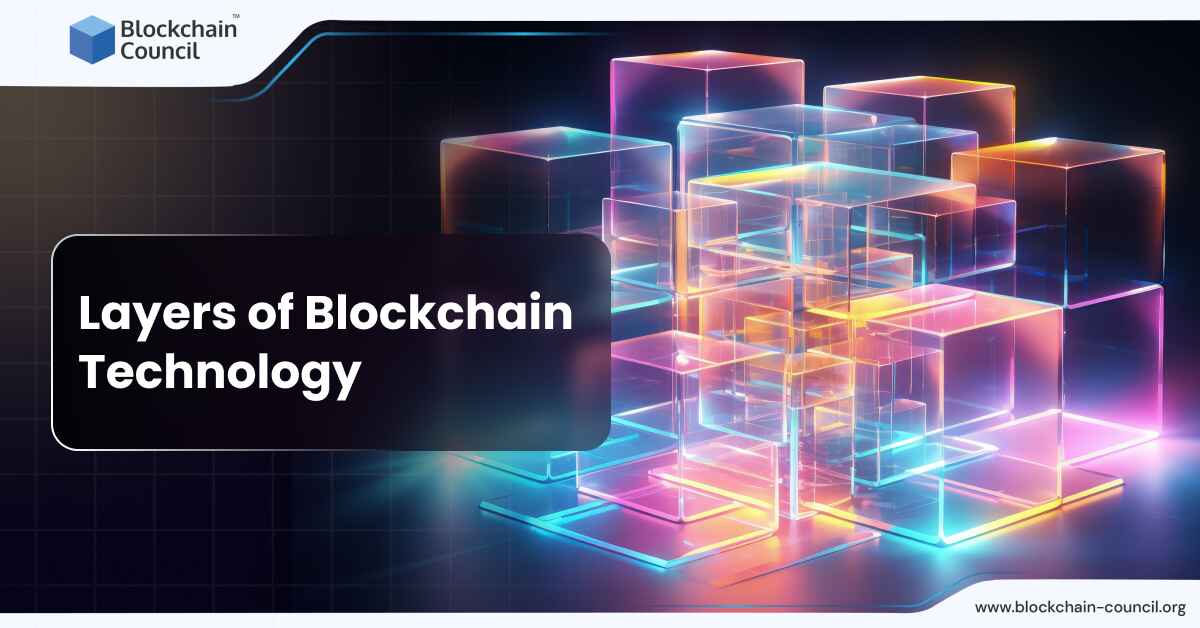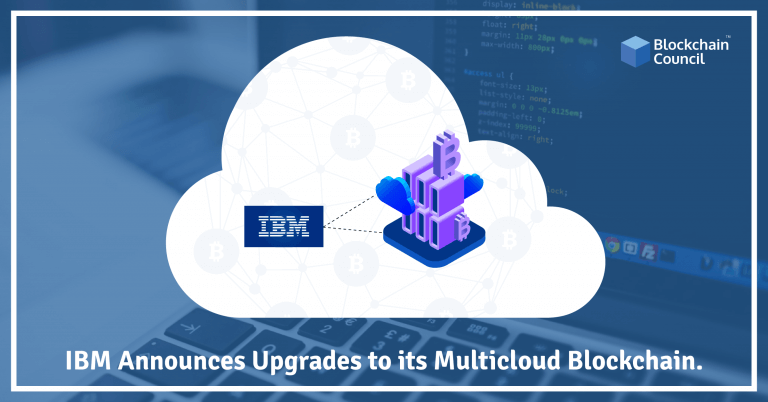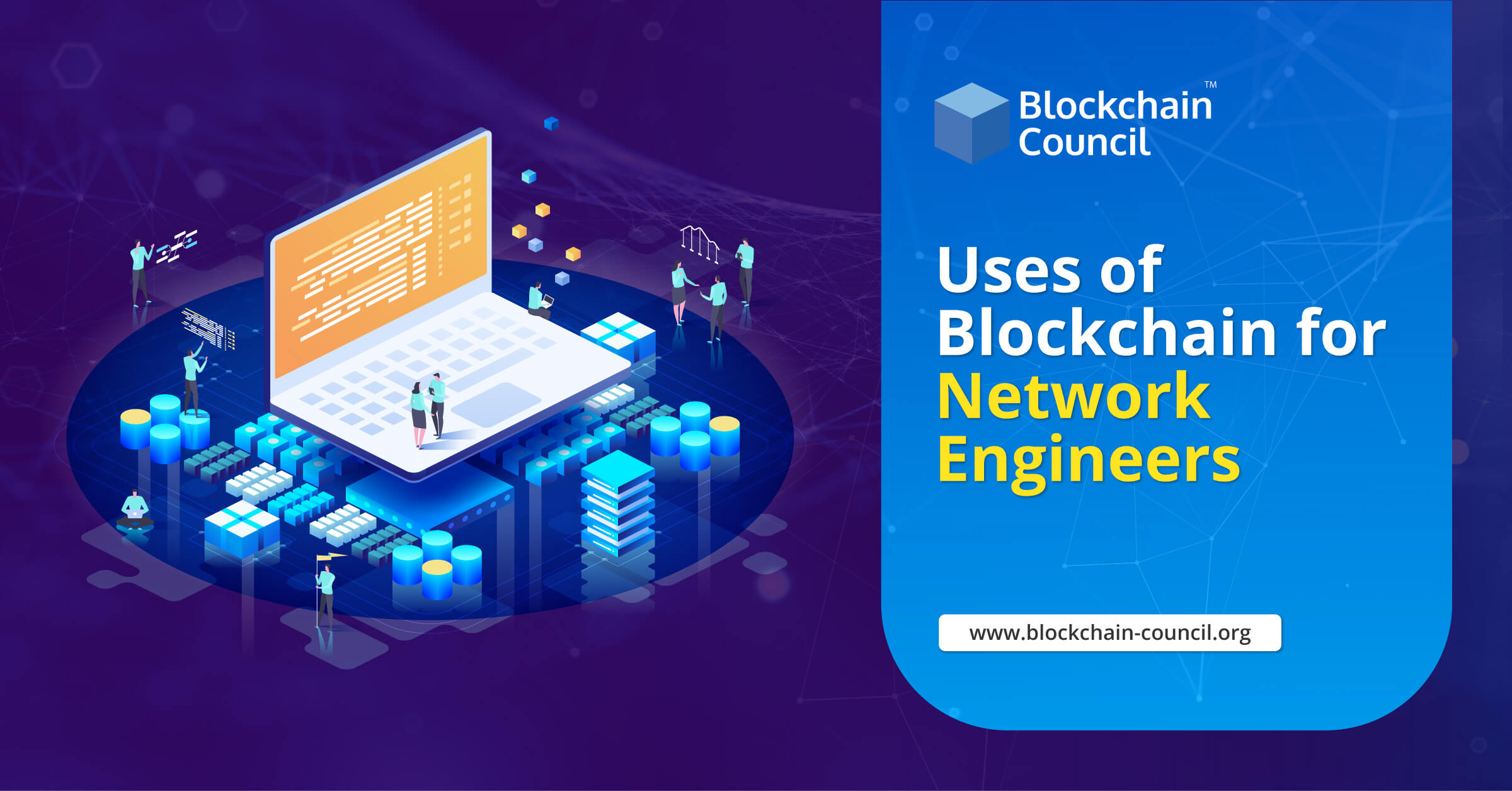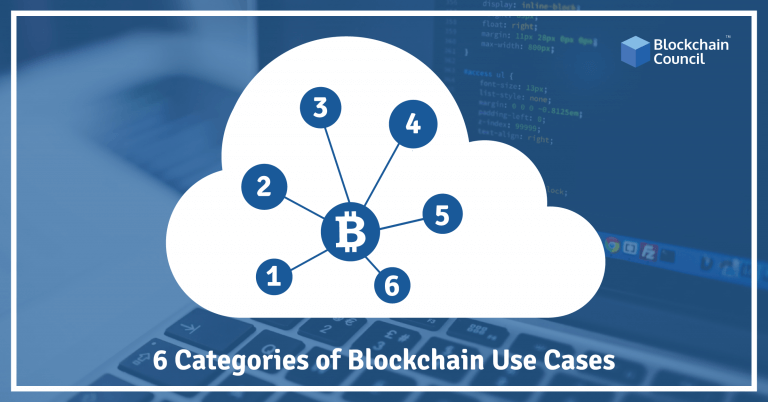
- Blockchain Council
- August 21, 2024
Blockchain technology is a distinctive amalgamation of twenty-century technologies like cryptography, game theory, etc. As a result, Blockchain technology has a wide spectrum of use-cases, including the present fintech trend, cryptocurrency. For those new to the terms cryptography and game theory, cryptography is simply the encryption and decryption of data, and game theory is the study of strategic interaction mathematical models among rational decision-makers.
Blockchain technology offers benefits like transparency and unbreachable security by enhancing efficiency, minimizing operational costs, and eliminating intermediaries.
When it comes to Web 3.0 and Decentralized Ledger Technology (DLT), especially in connection with Blockchain, you may have heard people talk about the different layers of Blockchain. But what exactly are they, and why are they so vital?
In this post, we’ll look at how layers are vital in IT ecosystems and how the Blockchain setup works according to the different layers.
Fundamentals of Blockchain Technology
Basic Concept and Structure of Blockchain
Blockchain technology represents a paradigm shift in how we perceive and manage digital information. At its core, Blockchain is a distributed ledger technology (DLT) that records transactions in a decentralized and secure manner. The basic structure of a Blockchain consists of a series of blocks. Each block contains a collection of transactions, securely linked to the previous block through cryptographic principles, forming a continuous and unbreakable chain.
This structure is underpinned by the use of cryptographic hashes, specifically a hash function, which ensures the integrity of the data within each block. When a block is completed, it is timestamped and undergoes a hashing process. This generates a unique identifier for the block, securing its contents against tampering and retroactive alterations.
Importance of Decentralization in Blockchain
Decentralization is the cornerstone of Blockchain technology. Unlike traditional centralized systems where a single entity has control, a Blockchain distributes its data across a network of computers, known as nodes. This decentralization enhances the robustness and security of the system. It eliminates single points of failure and makes it extremely difficult for any malicious actor to manipulate the ledger.
In Blockchain networks, every participant (node) has a copy of the ledger, and consensus mechanisms are employed to ensure all copies are synchronized and agree upon the state of the ledger. This consensus is crucial in maintaining the integrity and trustworthiness of the Blockchain.
Overview of Key Terms in Blockchain
- Blocks: The fundamental units of a Blockchain, containing a bundle of transactions. Each block is cryptographically linked to its predecessor, forming a chronological chain.
- Nodes: Individual computers or servers that maintain a copy of the Blockchain ledger and participate in the network’s functioning. Nodes validate and relay transactions and, depending on their role, may participate in the consensus process.
- Miners: Specific types of nodes in Blockchain networks that perform the computational work needed to secure transactions and add new blocks to the chain. In networks like Bitcoin, miners solve complex mathematical puzzles, a process known as Proof of Work (PoW), to achieve consensus and earn rewards in the form of cryptocurrency.
- Smart Contracts: Self-executing contracts with the terms of the agreement between buyer and seller being directly written into lines of code. Smart contracts run on the Blockchain and automatically execute when predetermined conditions are met.
- Consensus Mechanisms: Protocols that ensure all nodes in a Blockchain network agree on the current state of the ledger. Examples include Proof of Work (PoW) and Proof of Stake (PoS).
- Cryptographic Hash Function: A mathematical algorithm that converts input data of any size into a fixed-size string of characters. It is a one-way function, making it infeasible to reverse-engineer the original input from the hash output.
- Distributed Ledger Technology (DLT): An umbrella term for technologies that distribute records or information among multiple participants. Blockchain is a type of DLT.
The Layering Architecture
However, because Blockchains do not have a single controlling body, all transactions must be safe, and data must be securely maintained on a distributed ledger. The distributed ledger technology (DLT) follows a predetermined protocol, with multiple computers (or nodes) throughout the network coming to a “consensus” to confirm transactional data. As new entries arrive, each node adds, examines, and changes them. To allow this unique kind of transaction authentication, Blockchains feature a layered design.
According to some Blockchain professionals, there are five layers of Blockchain technology:
- Infrastructure or hardware layer
- Data layer
- Network layer
- Consensus layer
- Application and presentation layers
However, Blockchain technology layers can also be categorized as:
- Layer 0
- Layer 1
- Layer 2
- Layer 3
So, what are these layers, and what benefits do they serve in Blockchain technology? Let’s have a look.
Infrastructure or Hardware Layer
A data server securely backups the Blockchain data. Our computers seek access to this data from the server when we surf the web or use any Blockchain apps. Blockchain platforms rely on P2P, i.e., peer-to-peer network architecture, where one node connects with other nodes to share data quickly and easily. The client-server architecture is the structure that allows for this data exchange.
It is nothing more than a large network of devices connecting with one another and exchanging data and information. A distributed ledger is constructed in this manner. A node communicates with another device on the network where each node is authorized to monitor the transactional data randomly.
The Data Layer
A Blockchain is a series of hashed blocks carrying transactional records. The first block of the Blockchain is the Genesis block. After that, every new block added to the Blockchain is linked to the Genesis block through an iterative process. And thus, in this way, the Blockchain keeps on expanding.
Every transaction is ‘digitally signed’ using the sender’s wallet private key. This key is only accessible by the sender, guaranteeing that the data cannot be viewed or modified by anyone else. The owner’s identity is further protected by the digital signature, which is encrypted, assuring utmost security. In Blockchain terminology, this is referred to as ‘finality.’
The data encryption makes it inaccessible. In the case of data access, tampering it is nearly impossible. A digital signature also protects the sender’s or owner’s identity. As a result, a signature is legally associated with the person who signed it and cannot be ignored.
The Network Layer
The P2P framework allows several nodes to communicate transaction data in order to reach an agreement on the transaction’s legitimacy. This implies that every node on the network must be able to discover other nodes in order to communicate quickly. This ‘inter-node communication’ is made possible by the network layer. This layer is also known as the ‘Propagation Layer’ since it manages node detection, block generation, and block addition.
The Consensus Layer
One of the most important layers in Blockchain functionality, this layer is responsible for transaction authentication. Without this layer, the transaction validation will not take place, thus leading to system failure. This layer implements the protocol, which needs a specific number of nodes to validate a single transaction. As a result, each transaction is processed by numerous nodes, all of which must reach the same conclusion and agree on its legitimacy.
Because no node has exclusive authority over any transactional data, and the role is dispersed. It is also referred to as a consensus mechanism and maintains the Blockchain’s decentralized characteristic.
Multiple blocks may be formed concurrently, resulting in a branch in the Blockchain due to a large number of nodes processing transactions, bundling them, and adding them to the Blockchain. However, a single chain block addition is required at all times, and the consensus layer guarantees that this dispute is addressed.
Application and presentation layer
The application layer consists of the programs that end-users take advantage of to establish Blockchain network communication. Smart contracts, Dapps (decentralized applications), chaincode, scripts, UIs (user interfaces), APIs (application programming interfaces), and frameworks constitute the application layer.
The application layer and the execution layer are subdivisions of the application layer’s protocols. The Blockchain network acts as the back-end mechanism for the applications and communicates with the help of APIs. However, smart contracts, chaincode, and underlying protocols form the execution layer.
The constituting applications instruct the execution layer for the proper execution of transactions while ensuring the deterministic aspect of the Blockchain platform.
So there you have it: the five layers of a Blockchain that support the system. However, if you’ve been reading about Blockchains, you’ve probably come across terms like layer-0, layer-1, and layer-2. So, let’s have a look at what these layers are.
Layer-0
Comprising hardware, protocols, connections, and other components that form the foundation of a Blockchain ecosystem, Layer-0 acts as a network architecture underlying the Blockchain. This layer may be thought of as a “network of Blockchains.”
Inter-chain operability is also enabled by Layer 0, which allows Blockchains to communicate with one another. It provides a critical backbone for addressing future layer scalability difficulties. Layer 0 often employs a native token to enable participation and development.
Polkadot, Avalanche, Cardano, and Cosmos are some examples of Layer 0.
Layer-1
Layer-1 is responsible for carrying out the bulk of tasks that maintain a Blockchain network’s fundamental operations like dispute resolution, consensus mechanism, programming languages, protocols, and restrictions. Layer-1 symbolizes the actual Blockchain.
The large number of jobs that this tier must manage frequently causes scalability problems. As more individuals enter a Blockchain, the amount of computational power required to solve and add blocks to the chain grows, resulting in higher fees and longer processing times.
The scalability concern is somewhat mitigated by improved consensus techniques such as proof-of-stake and the advent of sharding (the division of computing operations into smaller parts). However, history has shown that they are insufficient.
Ethereum, Binance Smart Chain, Bitcoin, and Solana are all examples of Layer 1.
Layer-2
To enhance the Blockchain’s productivity, extra processing power is required. However, this necessitates the inclusion of extra nodes, which clogs the network. Although adding nodes is essential for sustaining a Blockchain’s decentralized character, fiddling with scalability, decentralization, or throughput will affect the others on layer 1.
As a result, layer 1 cannot be enlarged without relocating all processing to a second layer created on top of the first that is layer 2. This is made feasible by allowing third-party solutions to be integrated with layer 1.
A new network, Layer-2, revamps Layer-1 and manages all the transactional validations. Layer-2 sits on top of Layer-1 in the Blockchain ecosystem and constantly exchanges information with it. However, Layer-1 is only responsible for managing the addition and creation of new blocks to the Blockchain.
For instance, consider the Lightning Network as an example of a layer 2 Blockchain deployed on the Bitcoin Blockchain.
Layer-3
The last layer of the Blockchain ecosystem and the one visible to the human eye. Layer-3 is the one where participants will eventually interact with the user interfaces (UI). When working with L1 and L2, this layer aims to give simplicity and ease.
L3 not only provides UI, but also utility in the form of intra- and inter-chain operability, such as decentralized exchanges, liquidity provisioning, and staking applications. Decentralized apps (dApps) are a type of layer 3 interface that provides real-world applications for Blockchain technology.
Other examples include:
- Decentralized crypto exchanges like Pancake Swap and Uniswap.
- Wallet providers like Binance and Coinbase.
- Liquidity management protocols like Compound and Aave.
- Payments mechanisms like Tornado Cash.
Working Mechanism of Each Layer
In the complex architecture of Blockchain technology, understanding the working mechanism of each layer is crucial. The layered approach in Blockchain is instrumental in managing scalability, security, and decentralization, which are key aspects of Blockchain technology.
Layer 1: Core Blockchain Layer
Functioning: Layer 1 is the foundational layer of Blockchain. It’s responsible for the basic operations of the network, including transaction validation and block mining. The consensus mechanism, which is a critical aspect of Layer 1, ensures that all participants agree on the state of the Blockchain. This layer faces the Blockchain trilemma, balancing between scalability, security, and decentralization.
Consensus Mechanism: Layer 1 utilizes consensus mechanisms like Proof of Work (PoW) or Proof of Stake (PoS) to validate transactions. These mechanisms are essential to maintain the integrity and security of the Blockchain.
Challenges: However, Layer 1 Blockchains often struggle with scalability issues. As the number of users and transactions increases, these Blockchains can become slower and more expensive to use, leading to the development of Layer 2 solutions to address these limitations.
Layer 2: Enhancing Scalability and Functionality
Role: Layer 2 is an overlaying network that sits on top of the Layer 1 Blockchain. Its primary role is to enhance scalability and functionality. By handling transactions off-chain or more efficiently, Layer 2 reduces the load on Layer 1, thereby increasing transaction speed and reducing costs.
Examples of Layer 2 Solutions:
- Rollups: These are solutions that bundle multiple transactions into a single transaction roll, significantly reducing the load on the main chain.
- Sidechains: Independent Blockchains that run parallel to the main chain, designed for faster and more scalable transactions.
- State Channels: These allow for transactions among users outside of the main chain, reducing fees and speeding up the process.
- Nested Blockchains: A hierarchical structure of multiple sidechains connected under a parent chain, used for increased scalability.
Layer 3: Application and Real-World Use Cases
Applications: Layer 3 is where the decentralized applications (dApps) reside. It’s the interface that end-users interact with, built on top of Layer 2 or Layer 1 solutions. This layer aims to make Blockchain technology more accessible and user-friendly.
Examples of Applications:
- Decentralized Finance (DeFi) platforms like Uniswap and Sushiswap.
- NFT Marketplaces such as OpenSea and Rarible.
- Decentralized Autonomous Organizations (DAOs) like Aragon and DAOstack.
Functionality: Layer 3 solutions enhance user experience by providing user interfaces, wallets, and other tools that facilitate interaction with the Blockchain.
Conclusion
One of the reasons why widespread crypto adoption is now unattainable in the Blockchain sector is scalability. The desire to construct Blockchain technology will rise in conjunction with the demand for cryptocurrencies. Since each level of the Blockchain has its own set of restrictions, the only way to address the scalability trilemma is to build a scalable system.
Because the first layer serves as the foundation for all decentralized systems, it is crucial for the Blockchain ecosystem. Layer two protocols solve the underlying Blockchain’s scalability difficulties. Unfortunately, the bulk of layer three protocols (DApps) only run on layer one at the moment, disregarding layer two. So it’s reasonable if these systems aren’t performing to our expectations.
The creation of real-world Blockchain use cases relies heavily on layer three apps. As a result, they will not capture nearly as much value as the underlying Blockchain, in contrast to traditional networks.
Blockchains are currently extremely sophisticated and still in their budding state. Therefore, it will take years to complete Blockchain development.
However, breaking down the many underlying components that make up a Blockchain into technical layers might help to comprehend the concept better.
If you want to learn Blockchain technology but don’t know where to get started, then Blockchain Council is available for you. Blockchain Council offers some of the best Blockchain certification courses in-line with the current industry trends. You need to just check out the various available Blockchain technology courses and enrol into the one that stands by your expectations.
If you want to keep up with the trends of Blockchain industry, join our communities on Discord, Reddit and Telegram.
FAQs
What is the role of decentralization in Blockchain technology?
- Decentralization is fundamental in Blockchain, distributing control among nodes.
- It enhances security by eliminating single points of failure.
- Each node has a copy of the ledger, ensuring data redundancy.
- Consensus mechanisms among nodes maintain the Blockchain’s trustworthiness and integrity.
How does the layered architecture of Blockchain work?
- Blockchain operates through a five-layered architecture: infrastructure/hardware, data, network, consensus, and application/presentation.
- Layer 0 to Layer 3 categorize the Blockchain structure further.
- These layers collectively manage scalability, security, and decentralization.
What are Layer 2 solutions, and how do they address Blockchain scalability challenges?
- Layer 2 solutions are overlay networks built on Layer 1 Blockchains.
- They enhance scalability and functionality by handling transactions more efficiently.
- Examples include rollups, sidechains, state channels, and nested Blockchains.
- These solutions reduce the load on Layer 1, improving transaction speed and cost-effectiveness.
Why is scalability a challenge in Blockchain technology, and how can it be addressed?
- Scalability challenges arise from an increasing number of users and transactions.
- Layer 2 solutions address scalability by processing transactions more efficiently off-chain.
- Layer 1 Blockchains are also improving scalability with consensus mechanisms like proof-of-stake and sharding.
- Achieving scalability is crucial for widespread Blockchain adoption and real-world use cases.





































































 Guides
Guides News
News Blockchain
Blockchain Cryptocurrency
& Digital Assets
Cryptocurrency
& Digital Assets Web3
Web3 Metaverse & NFTs
Metaverse & NFTs
